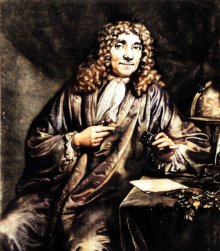Antonie van Leeuwenhoek writes about his findings on the circulation of blood in small vessels, including capillaries, providing a more in-depth understanding of the circulatory system.
 Antonie van Leeuwenhoek, a pioneer in microbiology known for his groundbreaking work with microscopes.
Antonie van Leeuwenhoek, a pioneer in microbiology known for his groundbreaking work with microscopes.
More about Antonie van Leeuwenhoek
No items yet. Click "Add" on a Quote.